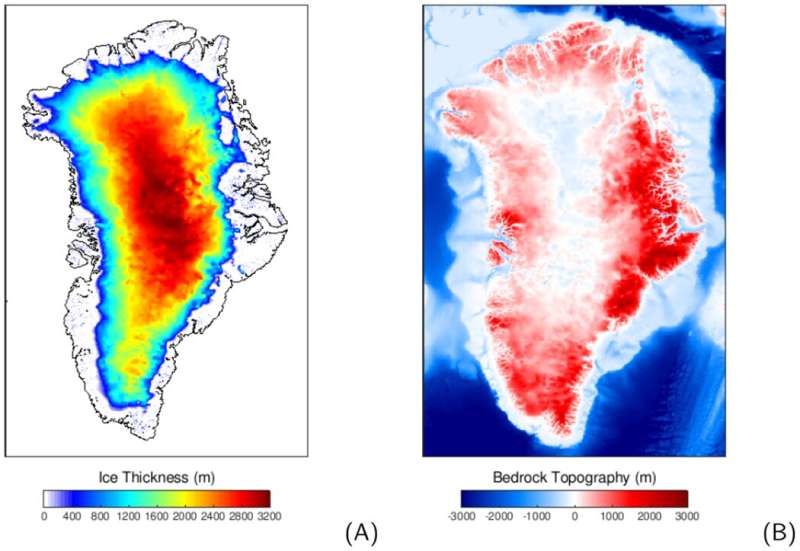January 31, 2022 report
Simulations show long lag in the effect of global warming on Greenland's ice sheet volume

A team of researchers working at the Alfred Wegener Institute Helmholtz Centre for Polar and Marine Research has found via models, that due to a long lag time, the Greenland ice sheet could continue losing ice over the next century whether global warming is brought under control or not. They have posted a paper describing their findings in the open-access journal PLOS ONE.
Prior research has shown that the volume of Greenland's ice sheet is growing smaller nearly every year as the planet grows warmer. In this new effort, the researchers suspected that reductions in the volume of the ice sheet will likely continue for many years no matter what climate changes happen now, because the ice sheet takes a long time to react. They note that prior research has shown that inner ice in the sheet does not melt as soon as air temperatures rise because it is protected by outer ice. But as outer ice melts away, the inner ice starts feeling the impact of the warmed temperatures and starts to melt. Scientists have found that this cycle of melting and freezing has been going on for thousands of years—but the time lag has always been there.
To make estimates regarding how the ice sheet might fare due to warming conditions today, the researchers created several models that described different aspects of the ice sheet as it reacted to multiple changes in atmospheric temperatures going back approximately 125,000 years. The data included both the increased atmospheric temperatures and the slow melting that occurred during and after. The researchers then added data to the models to describe current atmospheric temperatures and those that are projected for the year 2100. This data included increases in atmospheric temperatures going back to the late 1800s and the amount of ice that has melted already. The researchers then used data from the models to create a simulation of projected events.
The simulations showed that changes in atmospheric temperatures over the past century will very likely have a major impact on the ice sheet's volume for many years to come—from hundreds to thousands of years—regardless of whether global warming is brought under control. They further note that such melting will have a significant impact on global ocean levels. They conclude by warning that if greenhouse gas emissions are not brought under control, CO2 levels by the end of this century could reach those not seen for approximately three million years, a time when there was no ice sheet covering Greenland.
More information: Hu Yang et al, Impact of paleoclimate on present and future evolution of the Greenland Ice Sheet, PLOS ONE (2022). DOI: 10.1371/journal.pone.0259816
Journal information: PLoS ONE
© 2022 Science X Network




















